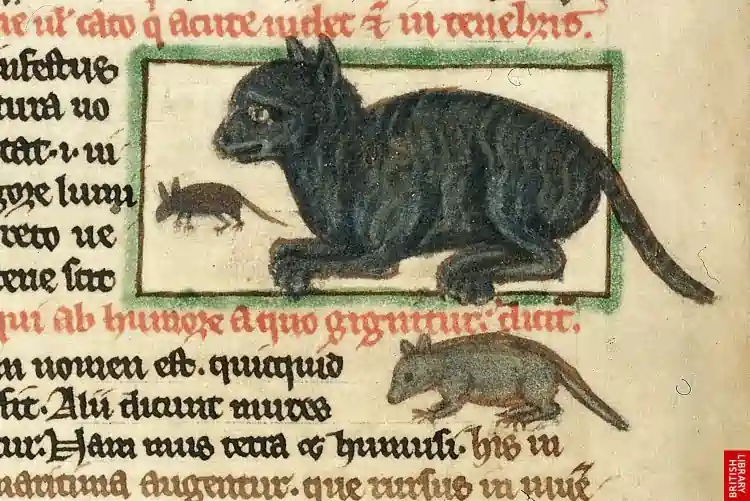
In June 1233, Pope Gregory IX issued a papal decree or hoax called: Vox in Rama. The hoax was issued by the pope in response to reports of blasphemy taking place in Germany. The person responsible for delivering the alarming news to the Pope was Konrad von Marburg, the Grand Inquisitor of the Germanic Empire.
Copies of the Papal Hoax and letters were sent to Emperor Frederick II, King Henry (VII) of Germany, Archbishop Siegfried III of Mainz, Bishop Conrad II of Hildesheim, and the preacher Konrad von Marburg himself. In these letters the Pope pleads that they collaborate with Konrad in his fight to eradicate satanic cults and heretics.
In "Vox in Rama", the pontiff describes in detail the pagan rituals that are held before the devil himself, revered as a dark figure half cat and half man. In said rituals, following Konrad's reports, orgies, homosexual contacts, worship of a statue of a cat that would come to life are described...
That hoax would go down in history, due to an involuntary factor. Gregory IX never condemns cats in his decree, he only details those rites, which had the cat as an element of the ritual. However, its long-term effect was devastating for feline life in 13th and 14th century Europe. The vision of the cat in European society in general was transformed, and it was associated with the devil. To this day, witches are always associated with black cats in popular culture, or are considered to bring bad luck if you come across them.
The persecution of cats took place throughout Europe in the 13th century, many towns and cities were depopulated by felines. And then came collateral damage that can make you understand why the plague, which had taken years to spread through Asia, only took a few months to infect almost the entire European population. Many scholars consider that this factor, the extermination of cats, was what contributed to the proliferation of rats, especially the black ones, which at the same time that they multiplied, without natural enemies, spread fleas infected with the Yersinia pestis bacterium.
This bacterium is commonly present in flea populations carried by rodents. It spread through the Mediterranean from Central Asia safely transported, rats and fleas, in merchant ships that brought species from Asia.
The plague had broken into Europe, and with it death. Nobody knew how and why people became infected, filling the cities and towns with patients who presented buboes or skin tumors, and in a few days these patients died.
Many European religious fanatics blamed groups foreign to their traditions such as the Jews or Gypsies, accused them of poisoning the water, of bringing evil for displeasing God with their pagan religious practices, as well as persecuting beggars, lepers and anyone who did not follow Christian standards. The different one was in their eyes the initiator of the plague, and many massacres were committed against these groups. Others blamed the animals, and turned their gaze on cats, formerly worshiped as gods by pagan peoples, and associated with the devil by the Vox in Rama hoax. Thus, the cats that survived the extermination of the 13th century were once again persecuted and burned, on many occasions.
Many believe that these acts of hysteria doomed the Europeans to the long epidemic of bubonic plague. On the one hand, they murdered or sent into exile many Jews who were doctors, and could in time study the phenomenon that spread the plague; as they eliminated the predator of the source of contagion, the cat, which kept the rodent population under control. These were multiplying and with them their fleas, which would explain why the bubonic plague hit Europe with such force. According to some historians, it killed 2/3 of the European population, while in other places where the plague also raged, such as India, Egypt, or the Middle East, the statistics of deaths and infections were never so high.
Don't touch my cat
Only in the 17th century did cats regain a place in European courts, being pets of kings and the aristocracy. At the same time, their function as predators of rodents is once again appreciated by the peasants who needed their services and the cities that suffered from the proliferation of rats.
The cat becomes a more popular pet than the dog, in the United States, in the 18th century because at the same time that its cities grew, prospered, and food abounded in homes, rats increased, and the cat became the protector of the houses before the stalking of rodents.